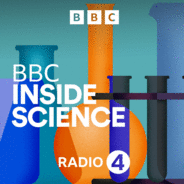Almost 40 years ago, the first treatment was approved for HIV, but it came with a warning: “This is not a cure.” On the week of World AIDS Day, Kate Bishop, principal group leader at the Francis Crick Institute, tells us how science may now have finally found a “functional” cure for the virus that causes AIDS. How are tree rings, volcanoes, trade routes and Europe’s deadly Black Death pandemic connected? Professor Ulf Büntgen from the University of Cambridge explains how matching tree ring data with historical records shows that Italian city-states importing grain accidentally introduced the Black Death to Europe. Plus science broadcaster Caroline Steel is in the studio to discuss her favourite new scientific discoveries. To discover more fascinating science content, head to bbc.co.uk search for BBC Inside Science and follow the links to The Open University. Presenter: Tom Whipple
Producers: Jonathan Blackwell, Ella Hubber, Tim Dodd, Alex Mansfield, and Hannah Fisher
Editor: Martin Smith
Production Co-ordinator: Jana Bennett-Holesworth

Wissenschaft & Technik
BBC Inside Science Folgen
A weekly programme that illuminates the mysteries and challenges the controversies behind the science that's changing our world.
Folgen von BBC Inside Science
631 Folgen
-
Folge vom 04.12.2025A 'functional' cure for HIV?
-
Folge vom 27.11.2025Why aren’t gene therapies more common?This week, a world first gene therapy treats rare Hunter syndrome. Could these personalised medicines be used more widely? We speak to Claire Booth, professor in Gene Therapy at Great Ormond Street Hospital. And high in the Chilean desert, the last bit of 13 billion year old light has hit the mirror of the Atacama Cosmology Telescope for the last time. Dr Jenifer Millard, a science communicator and host of the Awesome Astronomy podcast, tells us what it’s been up to for the past 20 years.And Penny Sarchet, managing editor at New Scientist brings her pick of the latest new discoveries.Think you know space? Head to bbc.co.uk, search for BBC Inside Science, and follow the links to the Open University to try The Open University Space Quiz. Presenter: Tom Whipple Producers: Alex Mansfield, Ella Hubber, Jonathan Blackwell, Tim Dodd and Clare Salisbury Editor: Martin Smith Production Co-ordinator: Jana Bennett-Holesworth
-
Folge vom 20.11.2025What’s in the wording of the COP 30 negotiations?COP 30 delegates from around the globe are about to depart the Amazon city of Belem in Brazil. But not before some very important documents are drawn up. Camilla Born, former advisor to Cop 26 president Alok Sharma speaks to Tom Whipple about the scientific significance of the language negotiators choose to use. And it’s the eve of The Ashes. As England Men’s Cricket Team line up against their Australian counterparts in Perth, cricket fans on both sides will be hoping for sporting records to fall. But is breaking those records getting increasingly less likely? And can some maths explain all? Tom asks Kit Yates, author and Professor of Mathematical Biology and Public Engagement at the University of Bath.Plus science broadcaster Caroline Steel is in the studio to discuss this week’s brand new scientific discoveries. If you want to test your climate change knowledge, head to bbc.co.uk search for BBC Inside Science and follow the links to The Open University to take the quiz. Presenter: Tom Whipple Producers: Jonathan Blackwell, Ella Hubber, Tim Dodd, Alex Mansfield and Clare Salisbury Editor: Martin Smith Production Co-ordinator: Jana Bennett-Holesworth
-
Folge vom 13.11.2025Could technology replace animal testing in science?This week the UK government set out its vision for a world where the use of animals in science is eliminated in all but exceptional circumstances. Animal experiments in the UK peaked at 4.14 million in 2015 driven mainly by a big increase at the time in genetic modification experiments. By 2020, the number had fallen sharply to 2.88 million as alternative methods and technologies were developed. But since then that decline has plateaued. Could we see the end of animals being used in science labs? Presenter Tom Whipple is joined by Dr. Chris Powell, Director of Cambridge BioPharma Consultants Ltd. and honorary visiting scientist at Cambridge University and Dr. Natalie Burden, head of New Approach Methodologies at the National Centre for the Replacement, Refinement and Reduction of Animals in Research (NC3Rs). And as world leaders gather for the COP30 climate conference in Brazil, we speak to glaciologist Dr. Matthias Huss. In the past decade, his data has shown that a quarter of Swiss ice has been lost, with hundreds of glaciers having disappeared entirely. But part of one of those glaciers remains in the freezer of his basement... Also Penny Sarchet, managing editor at New Scientist, brings us her take on the new science that matters this week. To discover more fascinating science content, head to bbc.co.uk, search for BBC Inside Science and follow the links to The Open University. Presenter: Tom Whipple Producers: Clare Salisbury, Tim Dodd, Alex Mansfield, Jonathan Blackwell Editor: Martin Smith Production Co-ordinator: Jana Bennett-Holesworth
